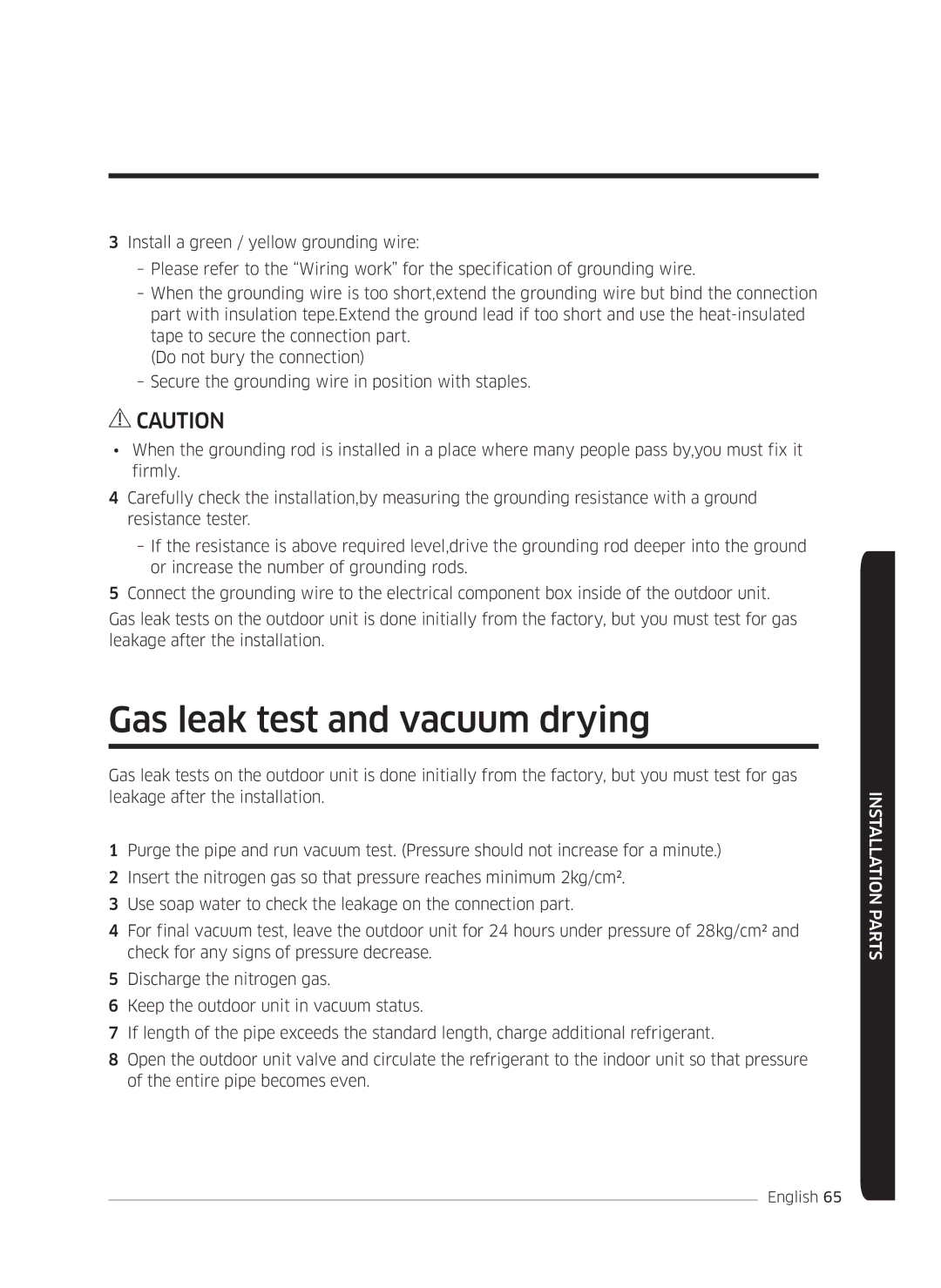
3Install a green / yellow grounding wire:
(Do not bury the connection)
![]() CAUTION
CAUTION
•When the grounding rod is installed in a place where many people pass by,you must fix it firmly.
4Carefully check the installation,by measuring the grounding resistance with a ground resistance tester.
5Connect the grounding wire to the electrical component box inside of the outdoor unit.
Gas leak tests on the outdoor unit is done initially from the factory, but you must test for gas leakage after the installation.
Gas leak test and vacuum drying
Gas leak tests on the outdoor unit is done initially from the factory, but you must test for gas leakage after the installation.
1Purge the pipe and run vacuum test. (Pressure should not increase for a minute.)
2Insert the nitrogen gas so that pressure reaches minimum 2kg/cm2.
3Use soap water to check the leakage on the connection part.
4For final vacuum test, leave the outdoor unit for 24 hours under pressure of 28kg/cm2 and check for any signs of pressure decrease.
5Discharge the nitrogen gas.
6Keep the outdoor unit in vacuum status.
7If length of the pipe exceeds the standard length, charge additional refrigerant.
8Open the outdoor unit valve and circulate the refrigerant to the indoor unit so that pressure of the entire pipe becomes even.
INSTALLATION PARTS
English 65
